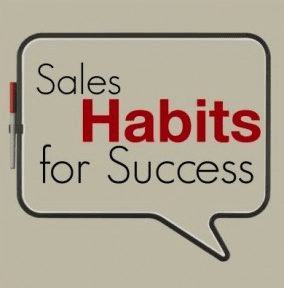Bonus programs are effective for motivating salespeople, but also costly for companies to maintain. Doug Chung and Das Narayandas study several compensation schemes to see which work best.
by Roberta Holland
It’s well understood that cash bonuses often motivate a sales force to step up its game, but they don’t work in every scenario and in some cases can backfire, a new study from Harvard Business School has found.
The key variable? Whether the sales rep had to do something to earn the bonus or was just given it—conditional versus unconditional.
Doug J. Chung, an assistant professor in the Marketing unit, and Das Narayandas, the James J. Hill Professor of Business Administration, explain what kind of bump managers can expect from different bonus plans in their working paper, Incentives versus Reciprocity: Insights from a Field Experiment, released in May. The pair used a consumer durable goods business in India as a real-world laboratory for the research.
“Running this kind of experiment is not the easiest thing in the world to do,” Chung says.
But it does have wide implications. The more than 14 million people employed in personal selling in the United States alone represent about 10 percent of the entire country’s labor force, according to the US Department of Labor. In addition, companies spend on average 10 percent of sales revenue on sales force costs and a much higher percentage in B2B firms.
The problem for researchers in this area, according to Chung, is that companies are reluctant to tinker with their compensation plan, so it’s difficult to come up with subjects to study. So previous research was usually conducted in a labor with undergrad students or temps hired specifically for the experiment—not actual field research.
“Luckily, this company wanted to know about the compensation plan in more detail, so they were willing to experiment, and we took advantage of that,” Chung says.
THE POWER OF QUOTAS
The researchers’ main finding was that the company saw a roughly a 20 percent gain in sales when the bonus was conditioned on the salesperson hitting a quota. When there were no strings attached to the bonus, the gains dropped to half that in one scenario, and to a net decrease of 8 percent in another.
“In the sales force setting, people work harder if they’re told a specific goal,” says Chung, noting that 80 percent of firms in the United States use some type of bonus to reward employees.
The field experiment spanned six months in the second half of 2013 and involved 80 full-time salespeople from branches in four major cities in India. The salespeople, who were selling water purifiers, were not told they were part of an experiment; Chung says the four branches were selected far apart to limit any “watercooler effect” of employees comparing notes. Within the six months, there were 14 weeks of different compensation schemes tested, assigned randomly by branch, interspersed with control weeks.
At the beginning of a test week, the company would send a text message to members of the sales force in a given branch, telling those employees they were getting a certain bonus. The branches were under different conditions at different times. The bonuses were equal in amount—500 rupees (about $7.80) per week, or roughly 27 percent of normal pay.
POSITIONING A SALES BONUS
The researchers set up an experiment to test the effectiveness of incentive pay based on how the extra compensation was framed to the salesforce by the employer.
Message Communicated to Employee
Bonus
This week if you sell more than (weekly quota) units, we will give you an additional bonus of 500 Rupees, which will be paid to you in addition to your normal monthly pay on (date of payday).
Punitive
We have decided to give you a bonus of 500 Rupees this week, which will be paid to you in addition to your normal monthly pay on (date of payday). However, if you sell less than (weekly quota) units this week this payment of 500 Rupees will be taken away.
Real-punitive
We have decided to give you a bonus of 500 Rupees this week, which is enclosed in the envelope. However, if you sell less than (weekly quota) units this week this payment of 500 Rupees will be taken away from you on the next payday (date of the payday).
Gift
We have decided to give you a bonus of 500 Rupees this week, which will be paid to you in addition to your normal monthly pay on (date of the payday).
Real-gift
We have decided to give you a bonus of 500 Rupees this week, which is enclosed in the envelope.
Source: Incentives versus Reciprocity: Insights from a Field Experiment.
Three of the schemes were conditional, with a quota 20 percent higher than the typical sales volume, and two were unconditional. The conditional compensation schemes were termed bonus, punitive, and real-punitive. The bonus and punitive conditions were identical except for how they were framed. The bonus condition presented a positive spin: if you hit your quota this week, we’ll give you a bonus. The punitive condition was framed negatively: we have decided to give you a bonus this week, but if you don’t hit your quota, we’ll take it away. The real-punitive scheme involved actually giving the bonus to the salespeople up front, with the warning it would be taken back if they didn’t hit their quota that week.
“WE THOUGHT IN FEAR OF NOT WANTING TO LOSE THIS MONEY, THEY WOULD WORK EXTRA HARD. THAT DID NOT HAPPEN”
Results hardly differed between the three conditional versions, says Chung. He adds that the gains occurred equally among people classified as high performers or low performers before the experiment began.
“We thought, and even the company’s managers thought, the real-punitive condition would be the one where the salesperson would show the most effort,” Chung says. “It’s the theory of loss aversion, losses loom larger than gains. We thought in fear of not wanting to lose this money, they would work extra hard. That did not happen.”
Chung sees two factors at work. First, salespeople are exposed to bonus schemes on a regular basis, so they know it’s not a one-time thing. And second, research has found that when a good is frequently exchangeable, like money, loss aversion is not present. If the reward was something like a motorcycle, the outcome may have been different, he says.
The unconditional schemes had two versions, gift, and real-gift, both of which were given regardless of how the salesperson performed. The theory Chung and Narayandas were testing was whether employees given an unconditional bonus would reciprocate by working harder. In the gift condition, the sales team was told the company had decided to give each member a bonus, which would be paid at the end of the week. In the real-gift condition, the salespeople were told about and given the bonus at the same time.
The gift condition showed a 10 percent boost, but Chung points out the positive effect came mainly from the high performers. For the low performers “the effect was close to zero,” he says.
In the real-gift condition, there was an average net decrease in performance by 8 percent.
“It actually hurt,” Chung says. “I think it’s because they thought they were being compensated for past performance. The thinking is, ‘Hey, I must be doing something right thus far. I think I may be overworking, so maybe I should slack off.’”
An unintended finding of the experiment revealed a big difference in the effects of seasonal fluctuations in demand. High performers were not affected much, but low performers were hugely affected by seasonal demand, Chung says.
A PRACTICAL GUIDE
The researchers, who will present the findings to the company this fall, believe the research can guide management decisions. If the company wants to smooth out its sales, it should put high performers in areas with high seasonal fluctuation, he says. If the company is giving an unconditional gift, sales managers should expect to see a boost in productivity from just the high performers.
Chung says he is often asked by the US or European sales managers whether the results would translate to their area or industry.
“My answer is basically yes. The study was conducted in India because that was the specific stage we chose, and it happened to be a firm that wanted to collaborate with us,” he says. “But it’s about basic human fundamentals of motivation. It would apply to any kind of setting that involves people wanting to motivate people.”











